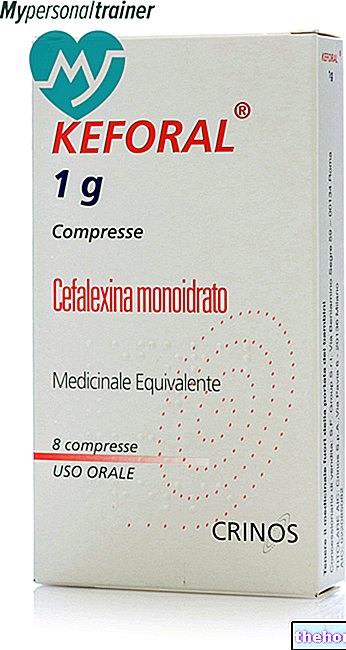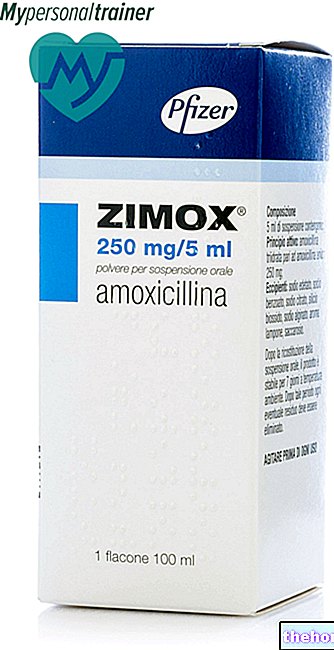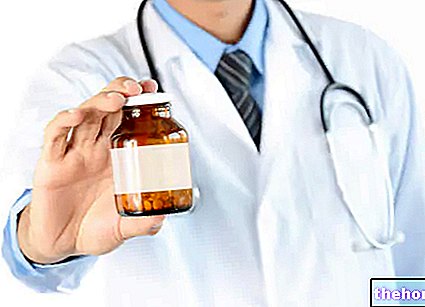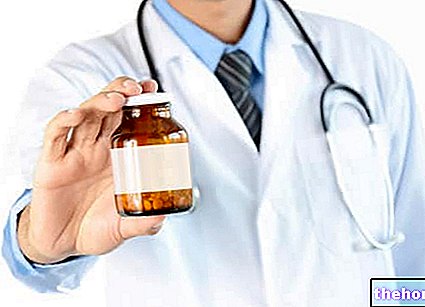Active ingredients: Tetracycline Sulfamethylthiazole
PENSULVIT 1% + 5% Ophthalmic ointment
Indications Why is Pensulvit used? What is it for?
Pharmacotherapeutic group
Pensulvit is a combination of broad spectrum antibiotics and is therefore active on the germs that are most frequently responsible for eye infections.
Therapeutic indications
Ocular infections sustained by germs sensitive to Tetracycline and Sulfamethylthiazole such as ulcerative blepharitis, dacryocystitis, conjunctivitis, septic corneal ulcers. Pre and post-operative prophylaxis. Adjuvant in the treatment of trachoma.
Contraindications When Pensulvit should not be used
Known individual hypersensitivity to the drug.
Precautions for use What you need to know before taking Pensulvit
In very early childhood and pregnancy, the product should be administered in cases of real need and under direct medical supervision.
Interactions What medications or foods may change the effect of Pensulvit
Sulfonamides are inactivated by para-aminobenzoic acid present in purulent exudates and its derivatives (Procaine).
The sulfonamide-trimethoprim combination has a synergistic effect.
The product is incompatible with silver-based preparations.
Warnings It is important to know that:
Prolonged use of topical antibiotics can lead to the growth of microorganisms that are not sensitive to them.
If, within a reasonable time interval, there is no evident clinical improvement with the use of the product or if there are manifestations of sensitization to the pharmacological components, it is necessary to suspend the treatment and undertake an adequate therapy.
Dose, Method and Time of Administration How to use Pensulvit: Posology
One application three - four times a day or according to medical prescription.
Side Effects What are the side effects of Pensulvit
Pensulvit is generally well tolerated.
Patients are asked, if side effects not described in the package leaflet occur, to notify their doctor or pharmacist.
Expiry and Retention
For the expiry date, see the packaging.
Warning: do not use the medicine after the expiry date indicated on the package.
Store below 25 ° C
OPHTHALMIC USE
KEEP THE MEDICINAL PRODUCT OUT OF THE REACH OF CHILDREN
Composition
100 g contain:
Active ingredients: Tetracycline g 1 - Sulfamethylthiazole g 5.
Excipients: Anhydrous lanolin - Cod liver oil - Liquid paraffin - White petroleum jelly.
Pharmaceutical form and content
Ophthalmic ointment in a 6.5 g tube
Source Package Leaflet: AIFA (Italian Medicines Agency). Content published in January 2016. The information present may not be up-to-date.
To have access to the most up-to-date version, it is advisable to access the AIFA (Italian Medicines Agency) website. Disclaimer and useful information.
01.0 NAME OF THE MEDICINAL PRODUCT
PENSULVIT
02.0 QUALITATIVE AND QUANTITATIVE COMPOSITION
100 g of ophthalmic ointment contains:
Tetracycline g 1 - Sulfamethylthiazole g 5.
03.0 PHARMACEUTICAL FORM
Ophthalmic ointment
04.0 CLINICAL INFORMATION
04.1 Therapeutic indications
Ocular infections sustained by germs sensitive to Tetracycline and Sulfamethylthiazole such as ulcerative blepharitis, dacryocystitis, conjunctivitis, septic corneal ulcers. Pre and post-operative prophylaxis. Adjuvant in the treatment of trachoma.
04.2 Posology and method of administration
One application in the conjunctival fornix three - four times a day or according to medical prescription.
04.3 Contraindications
Known individual hypersensitivity to the drug.
04.4 Special warnings and appropriate precautions for use
Prolonged use of topical antibiotics can lead to the growth of microorganisms that are not sensitive to them. In the event that there is no evident clinical improvement with the use of the product within a reasonable time interval or if sensitization manifestations occur to the pharmacological components, it is necessary to suspend the treatment and undertake an adequate therapy
In very early childhood, the product should be administered in cases of real need and under the direct supervision of the doctor.
04.5 Interactions with other medicinal products and other forms of interaction
Sulfonamides are inactivated by paraaminobenzoic acid present in purulent exudates and its derivatives (procaine).
The sulfonamide-trimethoprim combination has a synergistic effect.
The sulfonamides, administered systemically, enhance the action of oral anticoagulants and hypoglycemic drugs and hydantoin anticonvulsants.
04.6 Pregnancy and lactation
The product should be administered in cases of real need and under the direct supervision of the doctor.
04.7 Effects on ability to drive and use machines
There are no contraindications
04.8 Undesirable effects
The product is generally well tolerated.
04.9 Overdose
No cases of overdose have ever been reported.
05.0 PHARMACOLOGICAL PROPERTIES
05.1 Pharmacodynamic properties
Tetracyclines are bacteriostatic antibiotics active on Gram + and Gram - bacteria, chlamydias, mycoplasma, rickettsiae and amoebas. Tetracyclines inhibit the protein synthesis of bacteria. Their site of action is the bacterial ribosome. In Gram germs, the antibiotic passively diffuses through the hydrophilic channels of the outer cell membrane formed by proteins. Subsequently it is transported, according to an energy-dependent mechanism, through the internal cytoplasmic membrane.
The mechanism of action underlying the penetration of Gram + bacteria is less clear; the involvement of an energy-dependent transport mechanism is certain.
Inside the bacterial cell, the tetracyclines bind to the 30 S subunit of the ribosomes at the level of which they prevent the contact between the aminoacyl-tRNA and the mRNA-ribosome complex, preventing the elongation of the polypeptide chain in formation.
Resistance to tetracyclines develops slowly and is mediated by plasmids.
Sulfamethylthiazole is a sulfonamide antibiotic, bacteriostatic with a broad antibacterial spectrum. In fact, it is active on Gram + and - germs and on Chlamydia trachomatis. Sulfonamides are structural analogues and competitive antagonists of paraminobenzoic acid (PABA) and therefore prevent the normal bacterial use of PABA for the synthesis of folic acid.
05.2 Pharmacokinetic properties
Most tetracyclines are absorbed although not completely from the gastrointestinal tract. Absorption is greater on an empty stomach; it is lower in the more distal segments of the gastrointestinal tract; it is however altered by the concomitant ingestion of milk, aluminum hydroxide gel, calcium salts, magnesium, iron and bismuth subsalicylate.
After oral administration, Oxytetracycline and Tetracycline reach maximum plasma concentrations within 2-4 hours. These drugs have a half-life of 6-12 hours. Maximum plasma concentrations of 2-2.5 mcg / ml are obtained with administration of 250 mg every 6 hours.
Tetracyclines concentrate in the liver and are excreted via the bile in the intestine from where they are partially absorbed. They cross the placenta and enter the fetal circulation and amniotic fluid. Tetracyclines concentrations in the umbilical cord plasma reach 60% and in the fluid. 20% of those present in maternal circulation amniotic Relatively high concentrations are found in breast milk.
The main route of excretion is renal but these antibiotics are also eliminated in the faeces.
Tetracycline and Rolitetracycline, following topical application, do not cause appreciable undesirable effects and are poorly absorbed by the ocular structures.
Tetracyclines have a low acute toxicity: the LD50 in mice is 130 - 180 mg / kg intravenously and 1,500 - 7,000 mg / kg per os.
Sulfonamides are rapidly absorbed from the gastrointestinal tract. An oral dose is absorbed for 70 - 100% and the first traces in the urine are found within 30 minutes of drug intake. Sulfonamides easily cross the placenta and reach the fetal circulation. Absorption after topical administration is null.
05.3 Preclinical safety data
Topical administration of the preparation is followed by poor local and systemic absorption.It has been seen, in fact, that after the application of large quantities of the product on the scarred skin of the rabbit, the plasma does not show any antibacterial activity.
06.0 PHARMACEUTICAL INFORMATION
06.1 Excipients
Anhydrous lanolin - Cod liver oil - Liquid paraffin - White petroleum jelly.
06.2 Incompatibility
The product is incompatible with silver-based preparations.
06.3 Period of validity
In intact packaging: 24 months
06.4 Special precautions for storage
Store below 25 ° C
06.5 Nature of the immediate packaging and contents of the package
6.5g aluminum tube.
06.6 Instructions for use and handling
None
07.0 MARKETING AUTHORIZATION HOLDER
S.I.F.I. S.p.A. - Registered office: Via Ercole Patti, 36 - 95020 Lavinaio - Aci S. Antonio (CT)
08.0 MARKETING AUTHORIZATION NUMBER
002177018
09.0 DATE OF FIRST AUTHORIZATION OR RENEWAL OF THE AUTHORIZATION
June 2000
10.0 DATE OF REVISION OF THE TEXT
July 2003




























